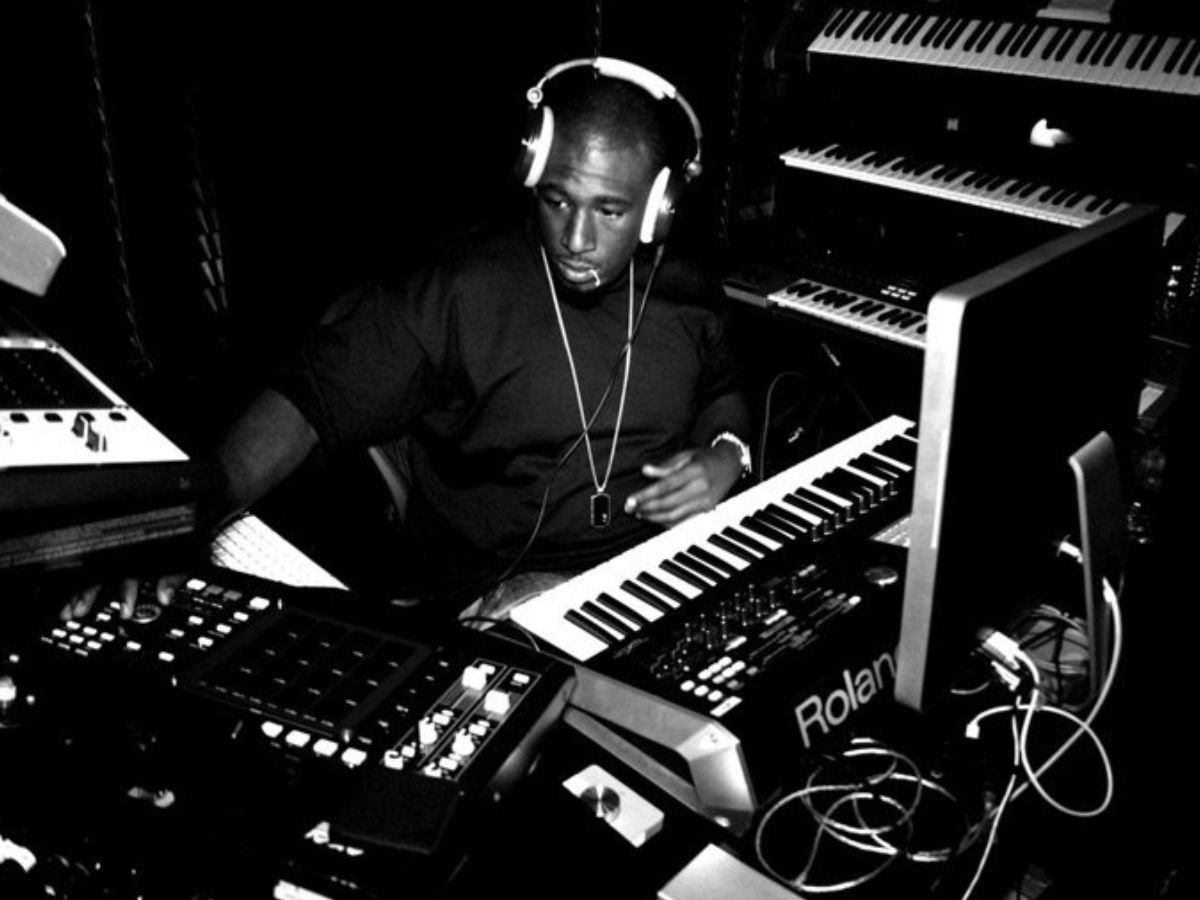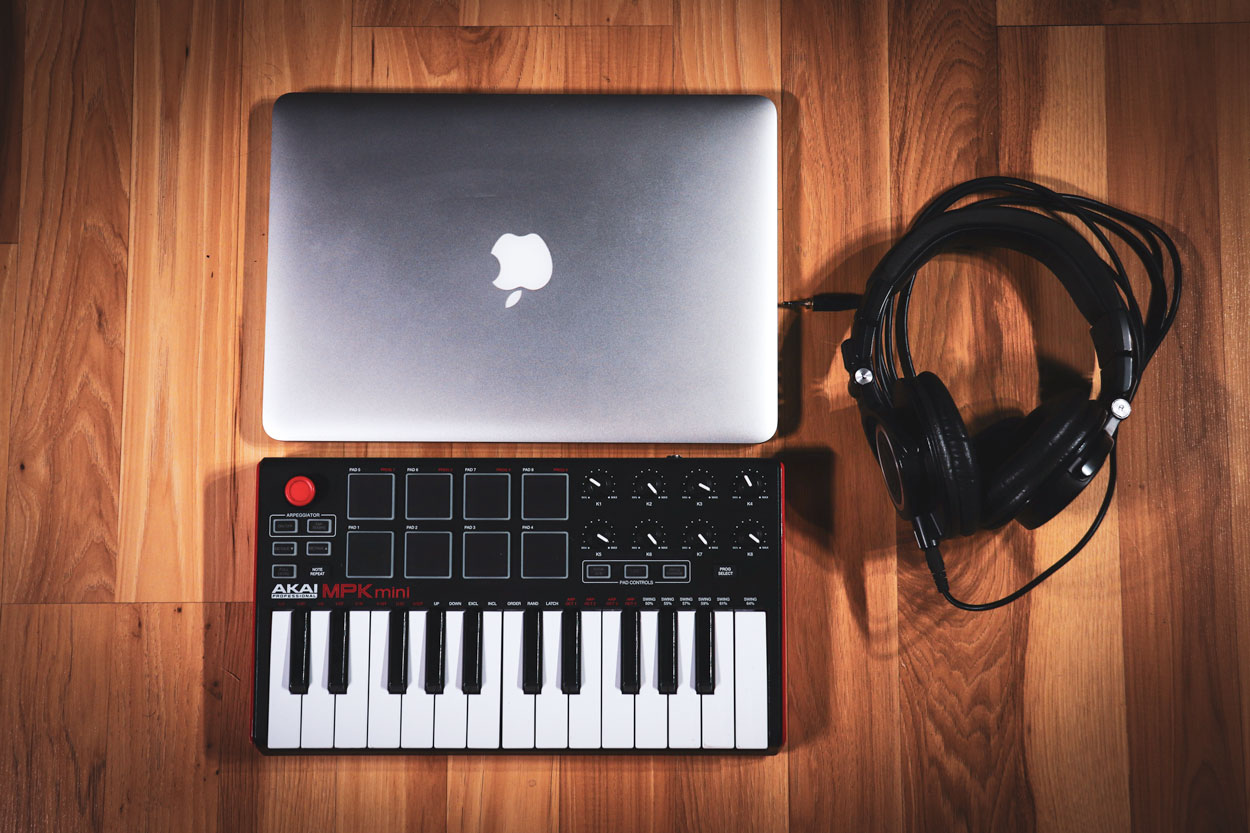

Hip Hop
How To Construct A Hip-Hop Beat
Modified: February 19, 2024
Learn how to construct a captivating and authentic hip-hop beat with our comprehensive guide. Unleash your creativity and groove to the rhythm of hip hop.
(Many of the links in this article redirect to a specific reviewed product. Your purchase of these products through affiliate links helps to generate commission for AudioLover.com, at no extra cost. Learn more)
Table of Contents
Introduction
Hip-hop music has become a cultural phenomenon, captivating listeners around the world with its infectious beats and powerful lyrics. From its origins in the streets of New York City in the 1970s, hip-hop has evolved into a global genre that has influenced countless artists and shaped popular culture.
At the heart of every great hip-hop song is the beat, which serves as the backbone of the music. Constructing a hip-hop beat requires a combination of technical knowledge, creativity, and a deep understanding of the genre’s foundation.
In this article, we will guide you through the process of creating your own hip-hop beat, from selecting the right equipment to the final steps of mixing and mastering. Whether you’re a seasoned producer looking to hone your skills or a beginner taking your first steps into the world of hip-hop production, this guide will provide you with the knowledge and techniques to create compelling beats.
So, grab your headphones, fire up your music production software, and let’s dive into the exciting world of hip-hop beat construction!
Equipment Needed
To begin your journey into hip-hop beat construction, it’s essential to have the right equipment. While professional studios are equipped with high-end gear, you can start with a basic setup that allows you to create impressive beats from the comfort of your own home.
Here are the key pieces of equipment you’ll need:
- Computer: A reliable computer or laptop is essential for running music production software. Look for a machine with a fast processor and ample RAM to handle the demands of audio processing.
- Music Production Software (DAW): Choose a digital audio workstation (DAW) that suits your needs and budget. Popular options include Ableton Live, FL Studio, Logic Pro, and Pro Tools. These software platforms provide the tools and interface for creating and arranging your beats.
- MIDI Controller: A MIDI controller is a device that allows you to play virtual instruments and trigger samples within your music production software. It usually consists of piano-style keys, drum pads, and knobs for controlling various parameters. This adds a tactile element to your beat-making process.
- Headphones: Invest in a good pair of studio headphones to accurately hear the details of your beats. Look for headphones with a flat frequency response, as they provide a more accurate representation of the sound compared to consumer-oriented headphones.
- Audio Interface: If you plan on recording vocals or external instruments, an audio interface is necessary to connect them to your computer. It converts analog audio signals into digital data that can be processed by your DAW.
- Samples and Sounds: Building a library of high-quality samples and sounds is crucial for creating unique and captivating beats. It’s worth exploring online marketplaces and sample packs to expand your sonic palette.
With these essential pieces of equipment, you’ll have everything you need to get started on your hip-hop beat-making journey. Remember, the quality of your beats is not solely determined by your gear but by your creativity and understanding of the genre.
Understanding the Basics
Before diving into the process of creating a hip-hop beat, it’s essential to have a solid understanding of the genre’s fundamentals. Hip-hop beats typically consist of four main elements: drums, bassline, melodies or samples, and effects.
1. Drums: The foundation of any hip-hop beat lies in its drum pattern. Commonly used drums include kick, snare, hi-hat, and clap. Experiment with different combinations and rhythms to create a groove that drives your beat forward.
2. Bassline: The bassline gives weight and depth to your beat. It typically follows the root notes of your chords or adds a melodic element to the composition. Ensure the bassline complements the drum pattern and adds a sense of rhythm and groove.
3. Melodies or Samples: Adding melodies or samples can be the highlight of your beat. This is where you can showcase your creativity by incorporating instruments, synths, or vocal snippets. Experiment with different melodies and sounds to create a unique sonic landscape.
4. Effects: Effects can enhance the overall sound of your beat. Common effects used in hip-hop production include reverb, delay, compression, and EQ. Use them subtly to add depth and texture or creatively to shape and manipulate your sounds.
By understanding the role of these elements in hip-hop production, you can create beats that are engaging and dynamic. It’s important to carefully craft each element to ensure they work harmoniously together.
Next, we’ll delve into the process of constructing a hip-hop beat step by step, covering topics like selecting the right tempo, creating the drum pattern, adding the bassline, incorporating melodies or samples, enhancing the beat with effects, and the final steps of mixing and mastering.
So, now that you have a solid foundation in hip-hop basics, let’s jump into the exciting process of beat construction!
Selecting the Right Tempo
One of the first steps in constructing a hip-hop beat is selecting the right tempo. The tempo, measured in beats per minute (BPM), sets the pace and energy of your track. It determines how fast or slow the beat will feel and can greatly influence the overall vibe.
Choosing the appropriate tempo depends on the style and mood you want to convey in your beat. Here are a few guidelines to help you make the right decision:
- Research: Listen to various hip-hop tracks across different sub-genres and note their tempos. Pay attention to how the tempo affects the energy and feel of the song. This can serve as inspiration for finding the right tempo for your beat.
- Consider the Sub-Genre: Different sub-genres of hip-hop have different typical tempos. For example, trap beats often range between 130-160 BPM, while boom-bap beats tend to be slower, around 80-100 BPM. Understanding the characteristics of the sub-genre you’re working with can help guide your tempo selection.
- Experiment: Don’t be afraid to experiment with different tempos to find the right groove for your beat. Sometimes a slight adjustment in BPM can completely change the feel of a track. Trust your instincts and listen to how the rhythm flows.
- Consider the Artist or Vocals: If you’re creating a beat for a specific artist or plan to include vocals, consider their style and vocal range. Some artists may be more comfortable with a certain tempo range, so keep that in mind when selecting the BPM for your beat.
Remember, the tempo is a crucial foundation for your beat, so take the time to find the perfect pace that matches your artistic vision. Don’t rush this step, as it sets the tone for the rest of the beat construction process.
Once you’ve selected the right tempo, you’re ready to move on to the next step: creating the drum pattern. This is where the beat starts to come alive and takes shape.
Creating the Drum Pattern
The drum pattern is the backbone of any hip-hop beat, providing the rhythm and groove that makes listeners want to move. It’s essential to craft a compelling and unique drum pattern that complements the tempo and sets the foundation for the rest of your beat.
Here are some steps to help you create an engaging drum pattern:
- Start with the Kick: The kick drum is often the driving force behind a hip-hop beat. It provides the low-end thump and creates a steady pulse. Begin by placing the kicks on the downbeats (1st and 3rd beats) of each measure. You can add variations like double kicks or syncopated patterns to add complexity.
- Add Snare and Clap: The snare and clap give your beat its signature snap and help accentuate the rhythm. Place snares on the 2nd and 4th beats of each measure to create a strong backbeat. Experiment with different snare sounds and add claps sparingly to enhance the groove.
- Incorporate Hi-Hats: Hi-hats contribute to the rhythmic intricacy of your drum pattern. Place them on the off-beats (between the kick and snare/clap) to add groove. Experiment with different patterns, such as closed hi-hats, open hi-hats, and hi-hat rolls, to add movement and variation.
- Add Percussion: Adding additional percussion elements, such as shakers, tambourines, or cymbals, can add a sense of texture and depth to your drum pattern. Place these elements in between the main beats to create subtle accents and fill out the rhythm.
- Create Fills and Variations: To keep your drum pattern interesting and dynamic, incorporate fills and variations. These can be simple drum rolls, pauses, or rhythm changes that add excitement and break up the repetition. Use them sparingly to maintain the overall groove.
Remember to keep your drum pattern tight, cohesive, and in sync with the tempo and style of your beat. Consider how each element interacts with the others and how they contribute to the overall energy and vibe.
Once you’re satisfied with your drum pattern, you can move on to adding the bassline, which will provide the low-end foundation for your beat.
Adding the Bassline
The bassline is a crucial element in hip-hop beats, providing depth, groove, and a solid foundation for the other instruments to build upon. It adds weight to your beat and helps drive the rhythm forward. Creating a compelling bassline requires careful consideration of the key and chord progressions in your beat.
Here are some tips to help you add an impactful bassline to your hip-hop beat:
- Understand the Key: Determine the key of your beat to ensure the bassline harmonizes with the other elements. The bassline usually follows the root notes of the chords or adds melodic variation to complement the overall composition.
- Keep It Simple: A good bassline doesn’t need to be overly complex. Focus on creating a strong rhythmic foundation that supports the drums and enhances the groove. A simple but well-executed bassline can be just as effective as a more intricate one.
- Experiment with Rhythmic Variation: Incorporate rhythmic variations in your bassline to add interest. Use different note lengths, rests, slides, or accents to create movement and keep the listener engaged.
- Use Techniques Like Slides and Glides: Slides or glides can add a smooth and dynamic feel to your bassline. Experiment with using pitch bends or portamento to create a seamless transition between notes.
- Consider the Tonality: Depending on the mood you want to convey, you can make your bassline sound more aggressive, melodic, or laid-back. Experiment with different tones and techniques to create the desired atmosphere.
Remember, the bassline should complement the drum pattern and work harmoniously with the other elements in your beat. Take the time to experiment and fine-tune your bassline until it locks in with the rhythm and adds depth to your composition.
Now that you’ve added the bassline, it’s time to move on to incorporating melodies or samples that will further enhance your hip-hop beat!
Incorporating Melodies and Samples
A standout feature of hip-hop beats is the incorporation of melodies or samples that add a unique and captivating element to the music. Whether you’re playing an instrument, synthesizing sounds, or using pre-recorded samples, melodies and samples can elevate your beat to new heights.
Here are some tips for incorporating melodies and samples into your hip-hop beat:
- Choose the Right Sounds: Select sounds and instruments that complement the overall vibe and mood of your beat. Consider the genre and style you’re aiming for and choose elements that fit within that sonic landscape.
- Create Engaging Melodies: Experiment with different melodic patterns and scales to create catchy and memorable hooks. Use techniques like arpeggios, chord progressions, or melodic motifs to add depth and complexity to your melodies.
- Manipulate and Process Samples: If you’re using pre-recorded samples, don’t be afraid to manipulate and process them to make them your own. Apply effects, chop them up, pitch-shift, or time-stretch to create unique variations and arrangements.
- Create Layered Textures: Layering different melodies or samples can add richness and depth to your beat. Experiment with blending different sounds and instruments to create interesting textures that work harmoniously together.
- Inject Personality with Solos or Hooks: Consider adding solos or hooks that showcase a particular instrument or sample. This can provide a moment of musicality and serve as a memorable focal point within the beat.
Remember, when incorporating melodies or samples, it’s essential to balance them with the other elements of your beat. They should enhance and complement the rhythm and groove rather than overpower or distract from it.
Having added melodies or samples to your hip-hop beat, you can now move on to enhancing the overall sound with effects, giving your beat that professional touch.
Enhancing the Beat with Effects
Using effects can take your hip-hop beat to the next level, adding texture, depth, and a polished sound. Effects can shape and manipulate your sounds, creating unique sonic landscapes and adding interest to your composition. Here are some popular effects and how to incorporate them into your beat:
- Reverb: Reverb adds space and dimension to your sounds, simulating the natural acoustics of a room. Apply reverb to instruments or vocal samples to give them a sense of depth and ambience. Experiment with different reverb settings to achieve the desired effect.
- Delay: Delay creates echo-like repetitions of your sounds, adding a sense of movement and spaciousness. Use delay on specific instruments or vocal samples to create rhythmic patterns or to create a trail effect. Adjust the delay time and feedback to create different rhythmic and textural effects.
- Compression: Compression helps control the dynamic range of your sounds, bringing out the details and ensuring a consistent volume level. Apply compression to your drum elements to make them punchier or to balance the volume of different tracks.
- Equalization (EQ): EQ is used to shape the frequency content of your sounds. Use EQ to boost or cut specific frequencies to emphasize certain elements or to carve out space for other sounds in the mix. For example, you can boost the low-end frequencies of a kick drum to make it more prominent.
- Filters: Filters allow you to manipulate the frequency content of your sounds by selectively letting certain frequencies pass through. Experiment with low-pass, high-pass, and band-pass filters to achieve different tonal effects or to create filter sweeps for transitions.
These are just a few examples of the many effects available to you. Each effect can be used subtly to enhance your sounds or creatively to achieve unique and experimental results. Exercise creativity and experimentation, as effects can play a significant role in defining your unique sound.
Now that you’ve enhanced your beat with effects, it’s time to move on to the final steps of mixing and mastering, where you’ll polish and balance the elements to achieve a professional-quality sound.
Mixing and Mastering
Mixing and mastering are crucial steps in the beat production process that ensure your hip-hop beat sounds professional, balanced, and ready for distribution. These steps involve adjusting the levels, EQ, and dynamics of each track to create a cohesive and polished final product.
Here are the key aspects to consider when mixing and mastering your hip-hop beat:
- Balance Levels: Adjust the volume levels of each track so that they sit well together. Ensure that no element overpowers another and that the drums, basslines, melodies, and samples blend harmoniously.
- EQ and Panning: Fine-tune the EQ of each track to shape its frequency content and create a balanced sound. Consider panning instruments to different positions in the stereo field to create separation and width.
- Dynamic Processing: Use compression to control the dynamic range of each track, making softer sounds more audible and reducing the peaks of louder elements. Apply gentle compression to the master track to further enhance the overall cohesiveness of the beat.
- Spatial Effects: Utilize reverb and delay to add depth and create a sense of space within your mix. Carefully apply these effects to avoid muddiness or overpowering the other elements. Experiment with different settings to achieve the desired spatial effect.
- Mastering: Once your mix is balanced, export it as a separate file and proceed with mastering. Mastering involves fine-tuning the overall tonal balance, stereo width, volume levels, and dynamics of the mixed track. Use a mastering plugin or seek assistance from a professional mastering engineer.
During the mixing and mastering process, use reference tracks from established hip-hop artists to guide you. A/B comparing your mix with commercial tracks can help highlight areas that need further adjustment.
Remember, mixing and mastering require a trained ear and experience, so don’t hesitate to seek feedback or learn from professionals in the field. With practice and attention to detail, you can achieve a polished and professional sound for your hip-hop beat.
Now that you’ve completed the mixing and mastering process, your hip-hop beat is ready to be shared and enjoyed. Take pride in your creation and continue to refine your skills as you embark on your musical journey.
Final Thoughts
Congratulations! You’ve now learned the essential steps and techniques involved in constructing a compelling hip-hop beat. From selecting the right equipment to mixing and mastering your final product, you’ve taken a journey into the world of hip-hop production.
As you continue to hone your skills and experiment with different styles and sounds, keep these final thoughts in mind:
- Find Your Unique Sound: While it’s important to draw inspiration from established artists, strive to develop your own signature sound. Experiment with different genres, sounds, and techniques to create something fresh and captivating.
- Embrace Collaboration: Don’t be afraid to collaborate with other artists, musicians, or vocalists. Each collaboration brings a new perspective and can lead to exciting and unexpected outcomes.
- Continuously Learn and Grow: The world of music production is constantly evolving. Stay curious, keep learning, and embrace new technologies, techniques, and trends to stay ahead of the game.
- Trust Your Ear: While technical knowledge is important, ultimately it’s your ear and intuition that will guide you in creating great beats. Trust your instincts and let your creativity shine.
- Enjoy the Journey: Producing hip-hop beats is a creative and fulfilling process. Embrace the joy of creation, enjoy the process, and don’t be discouraged by any setbacks or challenges along the way.
Remember, creating a great hip-hop beat requires a combination of technical skill, creativity, and a deep understanding of the genre’s foundations. With practice, experimentation, and a passion for the music, you have the potential to create beats that resonate with listeners and leave a lasting impact.
So, put your knowledge into action, trust your instincts, and let your imagination run wild as you embark on your hip-hop beat-making journey. Whether you’re creating music for yourself or for others, always remember to have fun and let your passion drive you forward. Happy producing!











